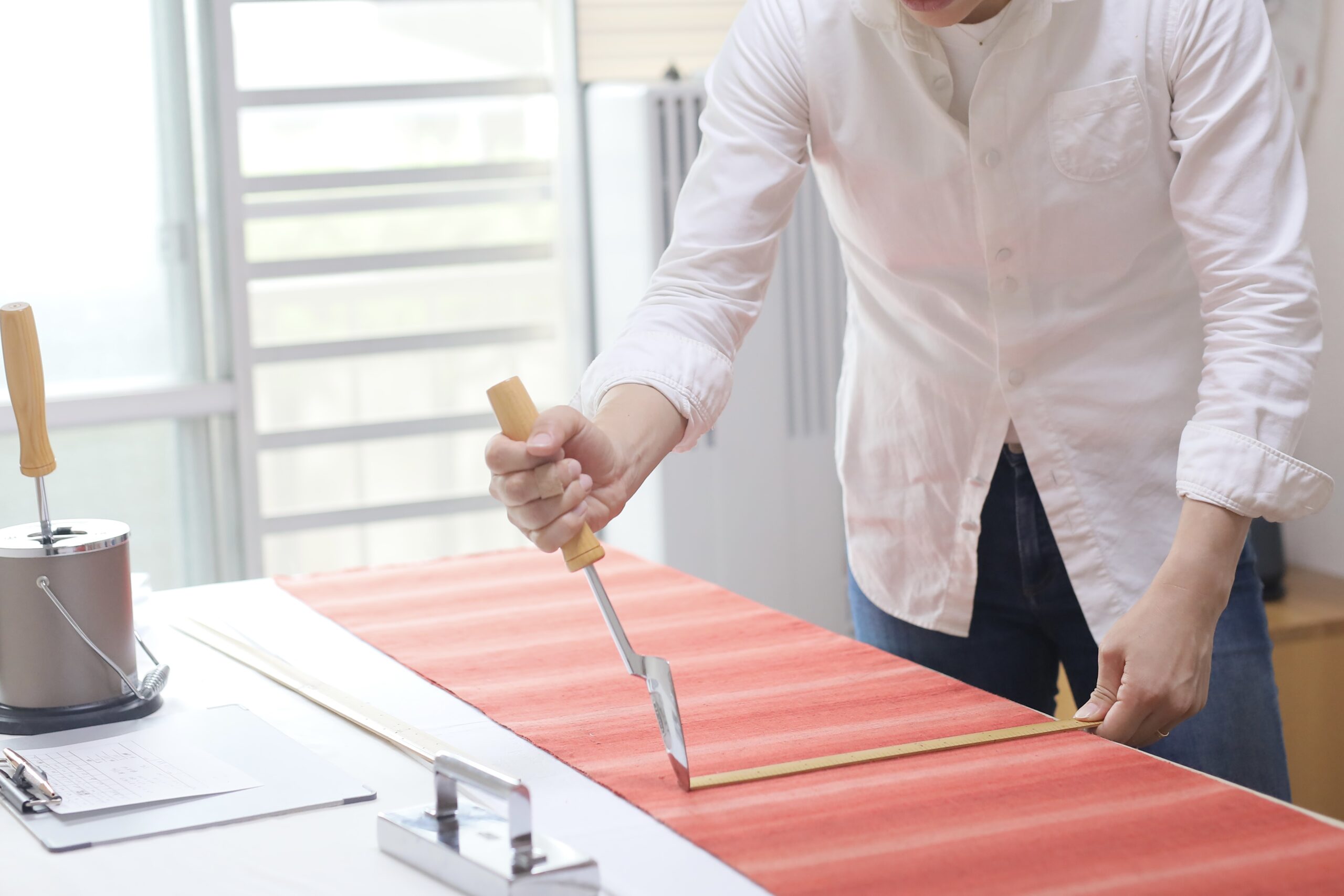There are rules on how to turn the seam allowance for backstitching, side stitching, and okumi stitching. The rule applies to women’s kimonos, men’s kimonos and children’s kimonos. The same rule applies to all types of kimono (yukata, Hitoe-kimono and awase-kimono), nagajuban, haori (Japanese traditional coat), and kimono coats. The difference is whether or not a “kise” is attached to the seam allowance. Here, I would like to explain the case of kimono.
Direction of turn seam allowance edge in.
- Backstitching : Turn in the left rear body.
- Side stitch : Turn in the front body.
- Okumi stitch : Turn in the Okumi cloth.
Reference Documents
The direction of seam allowance turning is shown in the figure.
About Kise
Kimonos are needed “Kise” that depth 5厘=2mm.
Kise is applied to all kimonos, including women’s, men’s, and children’s kimonos.
The depth of the kise differs from part to part, such as 1分=4mm, 1分 5厘=6mm, and so on.
Turning the seam allowance and applying the iron at a point 5厘=2mm outside the seam is said “kise wo kakeru(in Japanese).” In Japanese, “Kise wo kakete kudasai” is the same as “Please ironing at a point 5厘=2mm outside the seam.”
About Exceptions
There are no exceptions. Any kimono, yukata, houmongi, nagajuban, hanjuban, etc., men’s, women’s, or children’s, all follow this rule.
Other kimono sewing terms
-
 Sewing note
Sewing note
Rules for Expressing the Kujira-shaku Scale Using Only Numbers
In the world of kimono sewing, there are still many people who use kujira-shaku, and I am one of them.In this […] -
 Sewing note
Sewing note
Difference between “Senui (背縫い)” and “Sechushin (背中心)” : Kimono Sewing Terms Glossary
The words used for sewing a kimono and the words used for wearing a kimono are similar but definitely refer to […] -
 Sewing note
Sewing note
Conversion Formula Between cm and shaku
In kimono sewing, we use a unit called ” Kujira-shaku “.Here is the formula for converting cm to Kujira-shaku. […] -
 Sewing note
Sewing note
Single Thread and Double Thread : Kimono Sewing Terms Glossary
WASAI, the traditional way of sewing kimono, is done by hand without using a sewing machine. Here, I explain t […] -
 Sewing note
Sewing note
What is “ Kise ”:Kimono Sewing Terms Glossary
Closed seams and open seams are the two most common types of seams used in sewing, not only for kimonos, and a […] -
 Sewing note
Sewing note
T and V marks are useful to know when sewing kimonos : Basics of Kimono Sewing -Marking-
In kimono sewing, which does not use patterns, T and V marks are used as landmarks for marking.In this time, I […]
Online store
KOTARO online store sells Japanese sewing tools.
Let’s have fun sewing kimonos
with M KIMONO!
You can sew kimono anytime, anywhere.
Here is an environment where you can learn kimono sewing wherever you are.
Click here for details >>> https://jp.mkimono.tv/lessons/

